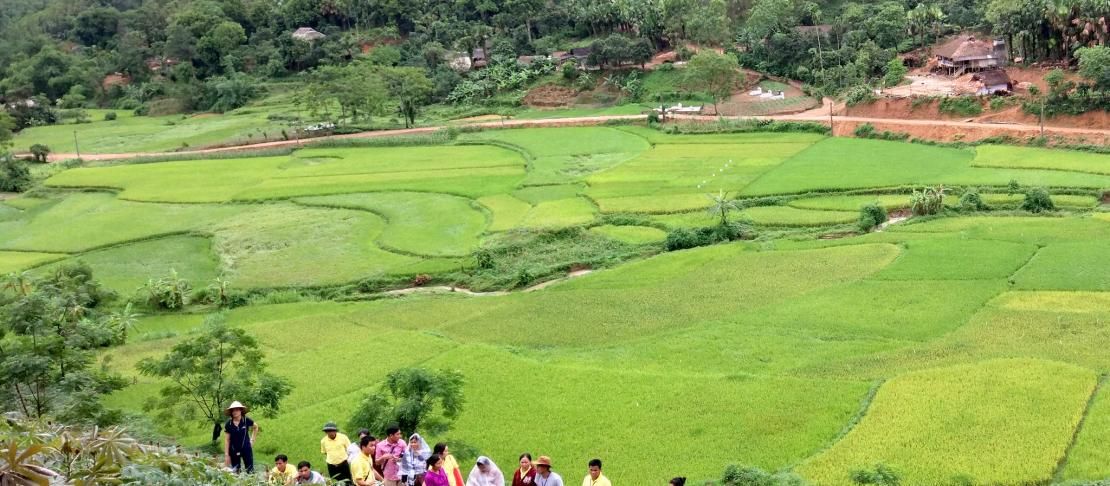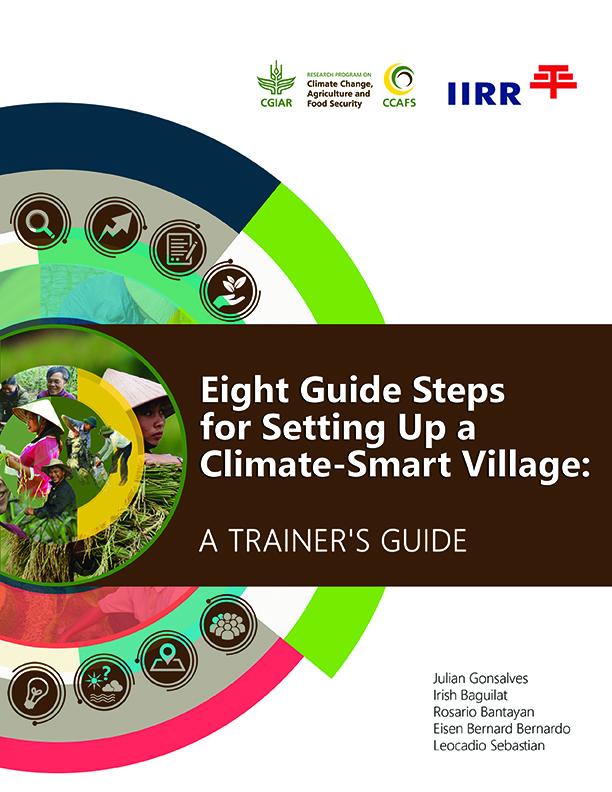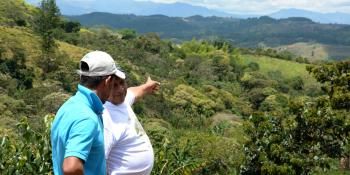How do we establish a Climate-Smart Village?

A new eight-step guide explores Climate-Smart Villages and provides practical insights for development workers and policymakers.
The CGIAR Research Program on Climate Change, Agriculture and Food Security (CCAFS) and the International Institute of Rural Reconstruction (IIRR) published a guide for agricultural development workers and policymakers that wish to apply the Climate-Smart Village (CSV) approach. The guide, titled “Eight Guide Steps for Setting Up a Climate-Smart Village: A Trainer’s Guide,” aims to improve their understanding of the approach. It provides practical insights for those trying to implement the approach, and hopes to support policymakers in fostering the enabling policy and institutional environment that will help CSVs thrive.
CSVs, the guide clarifies, are not new communities that are built from the ground up; they are set up in existing communities that are selected based on certain criteria. The guide explains this selection of suitable communities along with the process of gathering information such as climate risks, community needs, and pathways for scaling.
What makes the guide useful for a wide range of stakeholders is its flexibility, practicality, and simplicity. The training program, session guides, and suggested itineraries can be adjusted based on the target community. Since it is published digitally, it has relevant links that users can readily access. The major contents of the guide are summarized in eight key steps, which were drawn from the years-worth of CSV implementation in select Southeast Asian countries.
 Click here to read the publication |
The CSV approach: participatory and process-oriented
The participation of relevant stakeholders is at the heart of CSV implementation. Following the guide, the residents at the potential CSV, local government units, non-government organizations, and other relevant stakeholders are included in the evaluation of each step, ensuring that their insights, comments, and suggestions are considered in the entire process.
The process of CSV implementation is conducted with emphasis on both theory and practice. The theoretical component answers the five “W”s: who, what, when, where, and why. The practical component resolves the one “H”: the how-to.
The guide instructs CSV implementers to pinpoint the key players they need to engage. The climate-smart options that will be implemented are identified too. The potential CSV is selected based on how it represents its larger agro-ecological system. Draft itineraries are provided to conduct the activities smoothly. Most importantly, the key players are given time and space to learn why the CSV will be implemented in the first place.
Towards scaling
In each step, implementers are provided with tools—participatory action research approaches that will help them accomplish their goals. Not only are these tools useful for CSV implementation, they are also applicable for scaling. The scaling is an entirely separate step aimed to generate outcomes from the climate-smart options and the CSV approach itself. It can be horizontal (adoption of climate-smart options among farmers) or vertical (mainstreaming of options or the CSV approach in policies and institutions).
With this format, the guide equips the implementers with the necessary knowledge, attitude, skills, and practices they need to implement the CSV approach. Although it highlights the importance of following a step-by-step process, it allows implementers to make adjustments as long as the specific and general objectives are achieved.
Download the publication: Gonsalves J, Baguilat I, Bantayan R, Bernardo EB, Sebastian L. 2020. Eight guide steps for setting up a Climate-Smart Village: A trainer's guide. Cavite, Philipppines: International Institute of Rural Reconstruction (IIRR).
Read more:
- Blog: Talking to farmers about the impact of CCAFS’ work
- Blog: Contextual and universal: Scaling context-specific climate-smart agriculture
- News update: How smart are Climate-Smart Villages?
Renz Louie Celeridad is the Junior Communications Specialist for the World Agroforestry (ICRAF) Philippines and Communications Consultant for CCAFS Southeast Asia.



